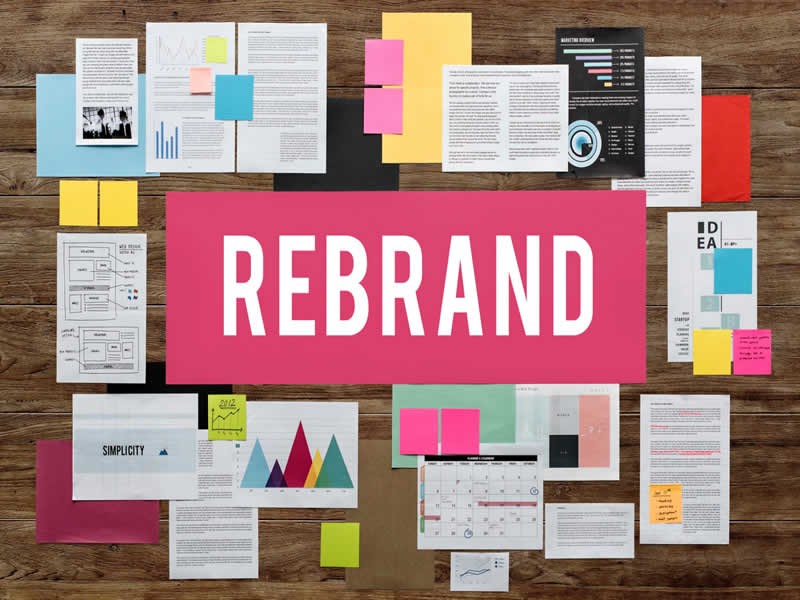Insight Blog
Agility’s perspectives on transforming the employee's experience throughout remote transformation using connected enterprise tools.
10 minutes reading time
(2094 words)
How do you rollout a new brand internally?
How do you rollout a new brand internally? When launching a new brand, it is essential to announce it both internally as well as externally.
In-house brand rollouts are not concerned with physical items. The new brand identity is more than a pretty face on a cup of coffee. What matters is keeping your word to your clientele and customers. The promise your company makes can only be fulfilled by the employees that work there.
Weirdly, most internal rollouts are welcomed with yawns. They are thrown together hastily at the end of a lengthy process with a minimal budget, which is why they often fall short of expectations.
What's more, most employees don't have the company's perception or customers' buying habits at the forefront of their minds, even though these things are evident to upper management. Unfortunately, people have a tendency to believe that a single exchange of information is sufficient. On the other hand, that is not the case.
It is unlikely that a rebrand will be successful if the staff doesn't embrace the brand promise or is unable to articulate it. In contrast, if workers get into the new brand's message, they'll work harder than ever to make it a reality. Workers of all ages are motivated when their company's leadership has a clear direction and strategy.
This article will give tips to help you roll out a new brand internally.
Why should you take internal branding seriously?
There are many factors that contribute to the success of a rebrand, but one of the most important is the implementation of an effective internal branding strategy. Involvement and buy-in from within the organization are crucial to the branding process's success. Key tactics include assigning responsibilities, checking for and fixing outdated content, utilizing software, and throwing a party to mark the launch.
It's crucial to take an internal brand refresh seriously because brand identity also profoundly affects how your staff approaches their work.
Since the most dedicated workers are the ones who are most invested in their brand, a successful internal rebrand launch may be a watershed event for your business and galvanize brand loyalty.
Because of this, savvy managers will spend energy on an internal brand rollout and get their staff behind the company's new image or mission.
13 Tips to improve the rollout of a new brand internally
For some, the next natural step is promoting your brand among consumers, which is crucial. But what about promotion within the company? Communicating the brand's significance to your team by detailing your journey and unveiling the big reveal could have more of an effect than you anticipate.
#1.Make a plan
An internal campaign is equally as crucial as outward activities but is often ignored. The goal is to get your staff to care about your company's name. Instead of sending an email to the team with a linked presentation, it would be more effective to give the presentation yourself. Workers need to buy in and feel like they belong to the new brand.
Without such participation, problems with brand pride, consistency, and ideals may arise, leading to a diluted brand and a less cohesive visual and strategic identity.
#2.Convince your employees
There are bound to be naysayers within the company who question whether or not the rebranding is a good idea; it's up to you to convince them otherwise. As a first step, the marketing department, not HR, should be in charge of all rebranding-related communications. Why? Successful businesses understand the importance of marketing.
To rebrand successfully, you need to convince your target market that you can deliver the value you've promised genuinely and persuasively.
#3.Roll of marketing team
Marketing should develop the rollout strategy, but the messages should come from the CEO. The driving force behind each successful branding is a clear objective. It's a matter of principles. It's crucial to the company's future that the CEO personally delivers this message.
Spending on the internal rollout should not cut corners. Employees won't be fooled by a cheap T-shirt and an email explaining the rebranding's significance. They will probably disregard the rebranding as unimportant and move on.
Invest as much time and energy into the internal campaign as you did the exterior campaign in the materials you deliver to employees. Your internal communications should reflect who you are while also demonstrating wit, clarity, and real punch. A yawn is the last thing you want your audience to experience.
#4.Share your vision
Timing the internal rollout of a new brand is crucial. Gather the employees for an emotional tale of the rebranding's ups and downs, from the initial decision to roll out the new look to the hard lessons learned along the way. Take some time to consider whether or not the company's mission, vision, and voice you want your employees to take away from this meeting remain the same or have changed.
Using these as a jumping-off point, you may bolster your delivery and set the stage for introducing the new visual identity.
#5.Use the right rebrand messages
The same messages must be communicated to both customers and employees. If, for instance, your company has no internal R&D budget and your pay schemes solely reward sales or the billable hour, then it would be dishonest to tell the market that you are all about innovation.
Spend some time making sure key decision-makers understand how the rebrand will affect the rest of your business. Branding isn't just about a logo and a website; the devil is in the specifics.
#6.Use eye-catching visuals
A well-planned visual narrative for your brand is crucial. Essential aspects such as logo design, color palettes, typefaces, photography, and applications can help change and unite employee thought and convey your desired brand image to your staff. Keep in mind the first time you were shown a different creative path and ask yourself if you can show them what it was like for you.
Can you have the designer lead them through the brainstorming process instead?
#7.Empower your employees
Now that your brand's internal and external mantras are in sync check that your staff is prepared to deliver on the brand's new promises.
What specific adjustments must be made to your operations to guarantee fulfillment of the brand promise? Is it time to upgrade your equipment? Should we try other techniques to get people excited? Does your organization have a strategy for dealing with critics and disruptors?
#8.Focus on creating the hype
You can get everything from a Moleskine notebook to a mug to a pen, a shirt to a poster. New collateral gives your staff something concrete that allows them to start utilizing and embracing the new brand immediately, and while this may seem like a gimmick, it is essential.
Because of their new role as brand protectors, they should familiarise themselves with the brand as soon as feasible. Who doesn't get excited about a brand-new notebook?
#9.Celebrate your strengths
Don't treat the launch as a chore. Instead, set aside some time and space to honor the successes of the company and express gratitude to the staff. Have some fun with it. Be specific about how your firm will benefit from the rebranding. Your staff's participation is crucial to the success of the brand.
Award your brand ambassadors with something memorable and enjoyable. Since everyone enjoys a good chance at a prize, your rebranding could be the impetus for a sea change in how employees view the company.
#10.Remember that it is a team effort
Gather support for your cause. Allow time for employees to ask questions, process the information you've presented, and become familiar with the brand's new standards. This data will be used to inform the strategy behind the external launch campaign.
#11.Monitor and reinforce
The moment you release your new brand is when the real job begins. You must consistently reaffirm this message to your internal target groups. And as you bring on new staff members, you'll want to ensure they're a good fit. Set aside space in your workplace to share the brand's ideals and success stories. Additionally, make sure to update it frequently.
Without a thorough internal rollout and buy-in, rebranding is like constructing a mansion with a beautiful facade but empty rooms on the inside.
An overhaul of your brand's image should not be taken lightly. It's a major corporate choice that needs support from the very top down. To succeed, you must first sell it to your own people.
#12.Assign roles to employees
Involving employees directly in the internal branding process has two major benefits: it gets people excited about the new brand and guarantees everyone will pull together to roll out the new brand company-wide.
Designate team members to represent the company externally on behalf of the group.
This could be one or two people or involve assigning someone to each division to oversee the rebranding process. In any case, make sure they have everything they need to spread the word about your brand refresh.
#13.Use software for internal branding
It may seem like an enormous chore to ensure that every document in your archives is updated to your brand. Still, digital solutions can execute the work for you, saving you time and effort.
With the help of intranet software, you can automate the process of updating your internal material, such as templates, papers, and brand assets, with the latest brand identity information with no disruption to your employees. It does this by keeping all content up-to-date and compliant in the event of modifications and updating it automatically.
How can an intranet help you to roll out a new brand internally?
Communication and teamwork are propelled forward by intranet software.
It's useful for coordinating data and media throughout a company's intranet. It helps with the company's internal branding by getting the word out and getting more people involved.
It simplifies the dissemination of high-quality communications to all employees by integrating internal systems.
It helps to create transparency
Businesses may be more transparent about their operations and choices if they use an intranet. When it comes to a global audience, it conveys reliable data about the state of businesses everywhere. In-house research shows that companies thrive when employees are free to share ideas and information.
Many workers would rather take an open and honest attitude, which transparency promotes by eliminating rumors and misrepresentations of the company's existing standing. Workers have the power to alter unfavorable outcomes and relish positive ones. Most significantly, they will be a highly engaged workforce that supports one another.
It can help to develop expert talent
For the sake of the company, it is in everyone's best interest to identify and cultivate internal thought leaders and topic specialists. It is possible for businesses to identify their most capable employees and put them in touch with others in the company who could benefit from their services.
It boosts recognition
To effectively promote employee engagement and define the work experience, peer-to-peer recognition is a crucial step.
This kind of teamwork has numerous positive effects, including making individuals feel valued and inspired in their work, which in turn boosts productivity and decreases employee turnover.
It helps to reinforce company values
Good company values set a business apart from its rivals and similar businesses. By efficiently disseminating strategic content to the appropriate people, intranet software will solidify and drive the company's values across the board.
Colleagues can work together better when they know how to communicate effectively. This helps to set the tone for the entire company.
It improves workers' experience on the job by showcasing the company's distinctive qualities on a private network.
It helps to establish brand identity
Employees can better comprehend the brand's values and goals thanks to internal branding's ability to forge a personal connection between them and the brand's identity. Intranet software should match the company's identity, which includes the name, logo, and tone of voice.
Wrapping up
Your rebranding symbolizes a departure for your business, and employees should feel like they're along for the adventure.
Whether it's a staff breakfast, a lunch-and-learn event, or a launch party, making a big impact with the introduction of your brand identity refresh is the greatest approach to generate buzz and interest in the rollout.
Making the introduction of your new brand identity into a memorable event for your employees can encourage them to get involved in the rollout and help secure internal rollout.
Categories
Blog
(2569)
Business Management
(314)
Employee Engagement
(204)
Digital Transformation
(171)
Intranets
(119)
Growth
(114)
Remote Work
(61)
Sales
(48)
Collaboration
(37)
Culture
(29)
Project management
(29)
Customer Experience
(25)
Knowledge Management
(21)
Leadership
(20)
Comparisons
(5)
Ready to learn more? 👍
One platform to optimize, manage and track all of your teams. Your new digital workplace is a click away. 🚀
Free for 14 days, no credit card required.














